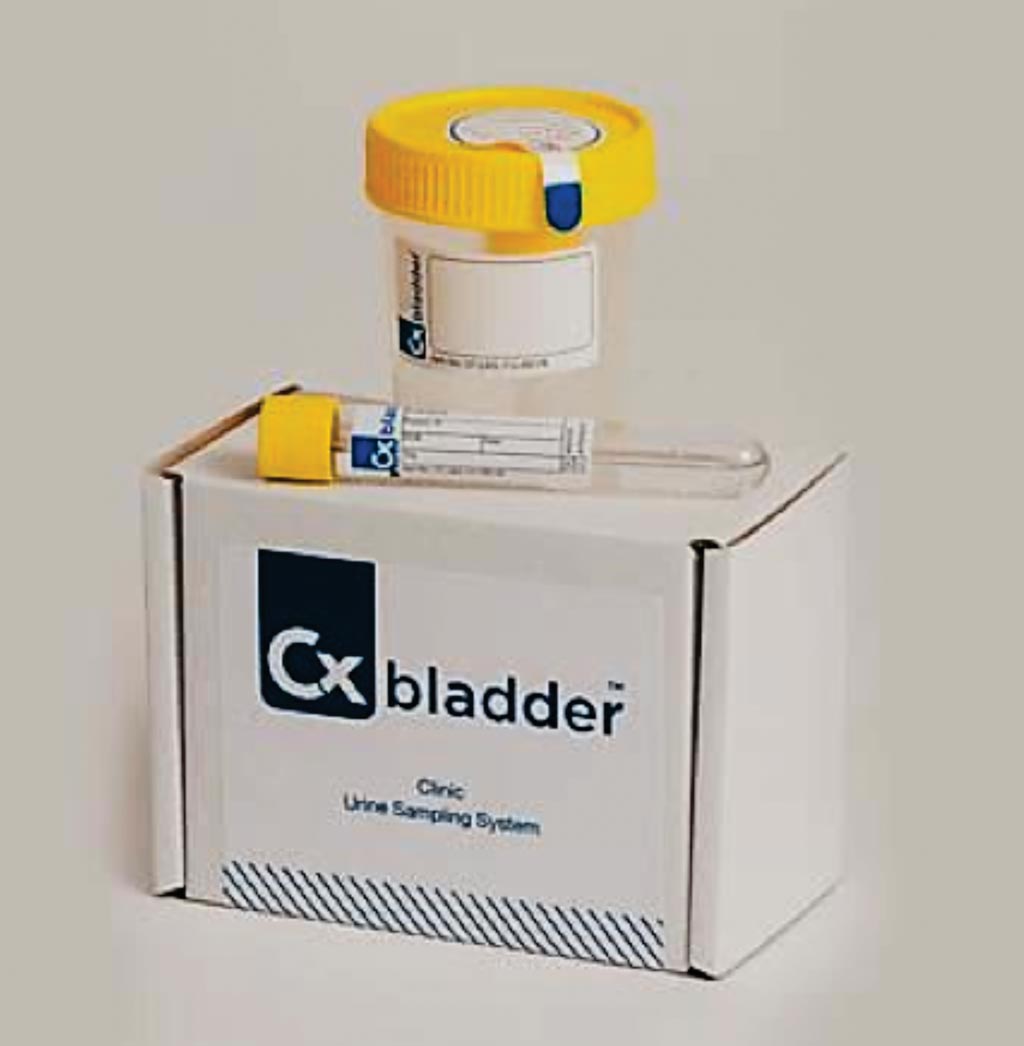Urine-Based Markers for Bladder Cancer Reviewed
By LabMedica International staff writers
Posted on 01 Nov 2017
The advances in understanding bladder cancer at the molecular and genetic level have led to the identification of detectable and measurable alterations associated with the disease. Given the ease of obtaining voided urine and its direct contact with potentially malignant urothelium, numerous urine-based tumor marker tests have been generated.Posted on 01 Nov 2017
Cystoscopy remains the standard for detection and surveillance of bladder cancer, but it is an invasive and potentially costly procedure. With the knowledge of molecular alterations associated with bladder cancer numerous urine-based tumor markers have become commercially available.

Image: The Cxbladder is a non-invasive, urine-based laboratory test that is accurate, easy to use and clinically validated; it measures gene expression levels of five biomarkers that effectively rule out or detect the presence of bladder cancer (Photo courtesy of Pacific Edge).
Urologists at the University of Texas Southwestern Medical Center (Dallas, TX, USA) have reviewed the role of urine markers for screening, detection, and surveillance of bladder cancer. The requirement for a biomarker to be valuable is that it needs to provide a benefit or improvement over the current standard evaluation. As has previously been described, an ideal biomarker needs to be “easier, better, faster, cheaper” than current standards.
Point-of-care tests like NMP22 BladderChek and BTA STAT can provide information during an office visit that may allow timelier decision-making. However, the more sophisticated markers often require more time to perform. Cost is also an issue for markers that rely on more technical expertise. The increased sensitivity of many urine markers such as fluorescence in situ hybridization (FISH) and uCyt+ and the high specificity of cytology, studies have shown that the combined analysis of these two tests reaches a high sensitivity and specificity.
The evaluation of second-test reflex UroVysion FISH and uCty+ testing in those with atypical or negative cytology has led to a prospective evaluation and subsequent validation study that was performed and found a high sensitivity of the FISH assay to detect bladder cancer in patients with atypical cytology and an equivocal or negative cystoscopy.
A new RNA assay, Cxbladder Detect was used in a prospective trial of 485 patients presenting with gross hematuria the bladder cancer incidence was 66 (13.6%), and the test performed with a sensitivity of 81.8% and specificity of 85.1%. Further stratification with removal of low-grade tumors increased the sensitivity and specificity to 91% and 90%, respectively. The study was published in the October 2017 edition of the Rambam Maimonides Medical Journal.
Related Links:
University of Texas Southwestern Medical Center














